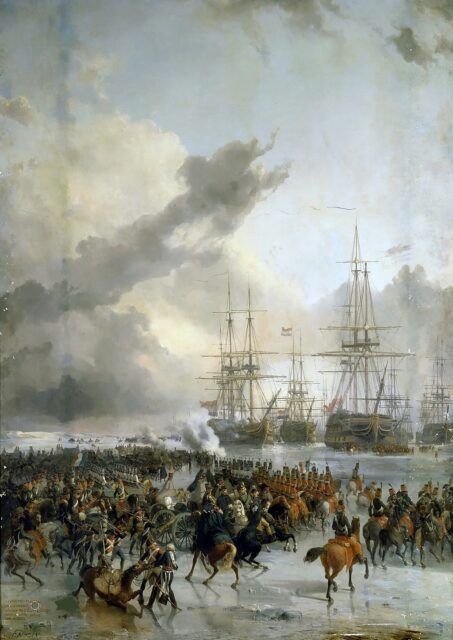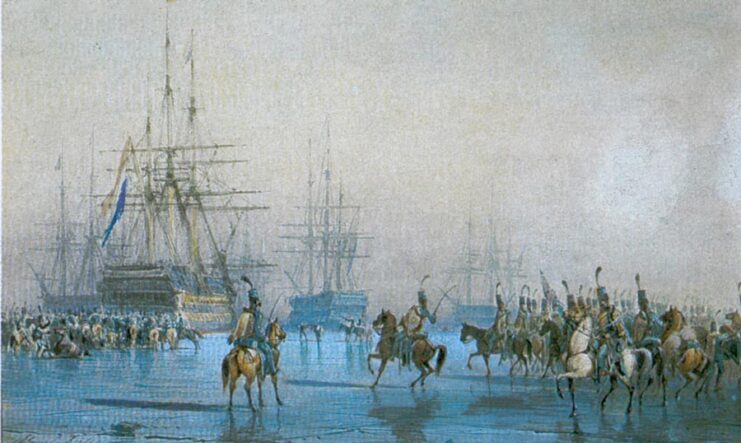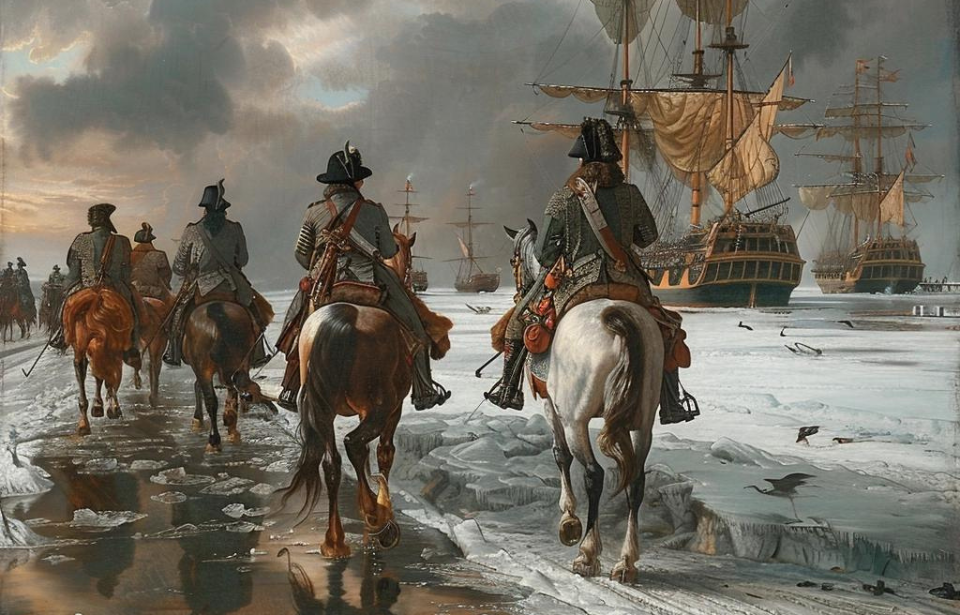There have been many strange occurrences throughout military history, but none were as unusual as the Battle of Texel. Taking place in the waters off the coast of Den Helder, the Netherlands, this engagement saw French cavalrymen approach and capture several Dutch vessels that had become trapped in the ice.
This unique event marked the only time in history that cavalry troops actually managed to seize a fleet of ships.
Trapped in the ice

The Battle of Texel occurred during the War of the First Coalition, a conflict that itself was one of the French Revolutionary Wars. The conflict, which took place between 1792-97, saw France and its allies and satellite nations face French Royalists, those nations under the Holy Roman Empire, the Dutch Republic and various Italian states. It resulted in a French victory that not only saw the country gain further influence across Europe, but also aided in the rise of Napoleon Bonaparte.
The winter of 1794-95 was a particularly cold one, leading many waterways across Europe to freeze over, including the Zuiderzee Bay, in the North Sea. Given the weather conditions, the Dutch fleet, commanded by Capt. Hermanus Reintjes, opted to ride out the winter in the area, with their 14 vessels becoming frozen in the thick ice.
On January 19, 1795, the same day the fleet arrived in the area, the Dutch announced the creation of the Batavian Republic, which later fell under the purview of the French Empire under Napoleon. Given the Dutch and French were now considered allies, there was no need to continue fighting – in fact, the new Batavian government issued an order to its fleets, including the ships anchored near Den Helder, to not fight the French and, instead, put up a defense against any British interference.
French cavalrymen arrive on the scene

On January 23, 1795, Gen. Johan Willem de Winter and his 8th Hussar Regiment arrived at Den Helder, having been told the day prior by Gen. Jean-Charles Pichegru to deal with the Dutch sailors trapped in the water. Accompanied by men from the 15th Line Infantry Regiment, Lt. Col. Louis Lahure and some cavalrymen took their horses, with fabric on their hooves, across the ice to the ships anchored in the water off the village.
The group of French troops arrived at the stranded Dutch fleet, expecting some resistance from the vessels’ crews. However, given the recent proclamation, they were invited aboard the ships to negotiate a surrender. They also were told the Dutch crewmen had plans to remain aboard their warships until the Dutch Republic’s political situation had become much more clear. Five days later, the crews swore an oath to the French.
As aforementioned, this marked the only time in history when a cavalry force captured a naval fleet. What’s more, no casualties were suffered, making what became known as the Battle of Texel (named for the nearby island) a unique juncture of the War of the First Coalition.
More from us: Alexander Suvorov: The Russian Military Leader Who Erased Napoleon’s Gains In Italy
Just over a month after the “engagement,” there was a mass mutiny among the Dutch crewmen stationed aboard the ships. They were upset over having not been paid for almost a year and viewed the change in government as a reason to no longer follow the rules set out under the Dutch Republic. The majority of the sailors left the vessels, leaving behind skeleton crews.
